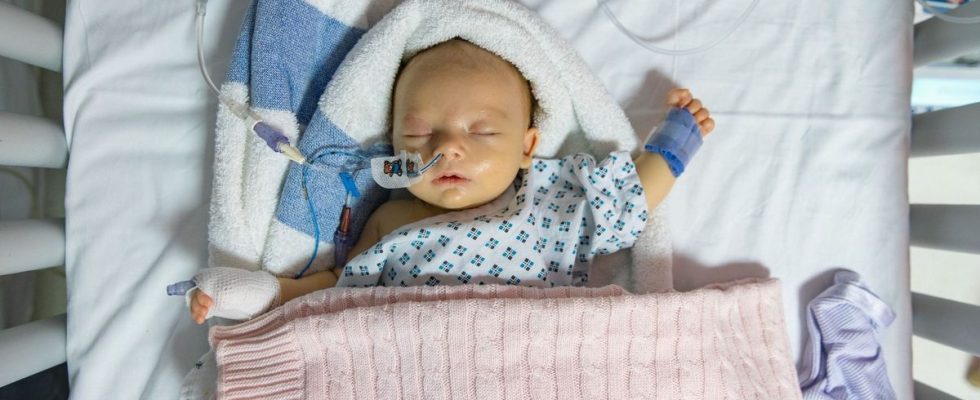Published on
Updated
Reading 3 min.
In the spring of 2022, an infant with a severe heart defect received the first ever partial heart transplant from a living donor. A year later, the transplanted parts grow with him, which will save him from further operations. This technique offers new perspectives to the many children suffering from congenital heart defects.
It was a true surgical feat that was performed in North Carolina in the spring of 2022. Owen Monroe, an infant suffering from truncus arteriosus, received the very first partial heart transplant from a living donor. Now one year old, he is in perfect health.
A world first and the only hope for Owen
When he was born, Owen Monroe had little chance of survival. He presented an extremely rare anomaly: his two main arteries were fused because his primary trunk, during pregnancy, had not divided into the pulmonary artery and aorta. However, without surgery, the prognosis was poor – the heart would have quickly been overworked.
Usually, in case of common truncus arteriosus, dead tissue is used. But they must be replaced several times before adulthood because the valves do not grow with the child. This congenital heart disease also requires lifelong monitoring and therefore several operations.
The other possible option is a complete heart transplant. But the waiting period is often far too long: in this case, Owen Monroe’s parents had to wait almost six months. An unthinkable option for their son who would not survive.
The doctors then offered the parents a somewhat unusual operation: separate and replace their son’s leaking heart valves with living tissue from another infant.
The grafted tissue grows with the child: no need for new operations
A Duke Health team has performed what is believed to be the world’s first partial heart transplant, with the living arteries and valves of a freshly donated heart fused onto a patient’s existing heart.
The goal is to allow the valves to develop with the child over time, thereby increasing life expectancy. “This procedure potentially solves the problem of a growing valve“, declared Professor Joseph W. Turek, chief of pediatric cardiac surgery at Duke, who led the operation. “If we can eliminate the need for multiple open-heart surgeries every time a child outgrows an old valve, we could extend that child’s life by decades or more.”Turek said.
“What is particularly remarkable about this procedure is that not only can this innovation extend the lives of children, but it uses a donated heart that would otherwise not be transplantable“, declared Prof. Michael Carboni, pediatric cardiologist.
“The valves in this procedure came from a donor heart that had too weak muscle tissue to make it viable for a full transplant, but had strong valves that were well suited to Owen’s needs” said Professor Carboni. “This innovation amplifies the ways we can use organ donations to save more livess”.
Results confirmed one year after the operation
One year after the operation, the team published a study on January 2, 2024 in the Journal of the American Medical Associationconfirming that the new method of valve harvesting used during partial heart transplantation resulted in two well-functioning valves and arteries that grow in concert with the child, as if they were native vessels.
The study finds that the procedure requires about a quarter of the amount of immunosuppressive drugs as a full heart transplant, potentially sparing patients from harmful side effects that could worsen over decades.
Prof. Turek said that this innovation paves the way for a domino heart transplant, since one heart can save two lives: a patient who has healthy valves but needs a stronger heart muscle receives a complete heart transplant ; their healthy valves can be donated to another patient in need, creating a domino effect.
“You could potentially double the number of hearts used to benefit children with heart disease“, enthuses Professor Turek.
A “miracle” according to Owen’s mother
Owen is showing remarkable growth and improvement since he underwent surgery on April 22, 2022, and his heart is developing perfectly.
For the mother, this operation is a “miracle”:
“Not only is he doing well, but he is thriving more every day. It’s a wonderful message of hope for all the babies who have to go through this ordeal”.
The partial heart transplant procedure has been performed 13 times at four centers around the world, including nine at Duke, several of which were domino heart transplants.
